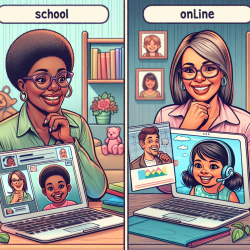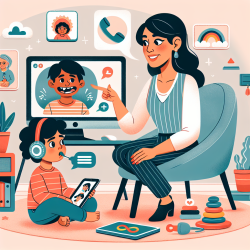Introduction
Burnout is a prevalent issue among Speech Language Pathologists (SLPs) working in schools. With increasing caseloads, administrative demands, and the emotional toll of the job, many SLPs find themselves feeling overwhelmed and exhausted. However, the advent of online therapy, also known as telepractice, offers a promising solution. This blog explores how embracing online therapy can help alleviate burnout and reignite the passion for helping children achieve their communication goals.
Understanding Burnout in School-Based SLPs
Burnout is characterized by emotional exhaustion, depersonalization, and a reduced sense of personal accomplishment. In the school setting, SLPs often juggle multiple roles, from direct therapy to administrative tasks, which can lead to a sense of being overburdened. The data indicates that burnout not only affects the well-being of the SLPs but also the quality of services provided to students.
The Role of Online Therapy
Online therapy, or telepractice, is a service delivery model that leverages technology to provide speech therapy services remotely. This approach has gained traction, especially in the wake of the COVID-19 pandemic, as schools and therapists sought alternative ways to continue services. Here’s how online therapy can address burnout:
- Flexibility: Online therapy offers SLPs the flexibility to manage their schedules more effectively, reducing the stress associated with commuting and rigid timetables.
- Efficiency: Telepractice can streamline administrative tasks, as digital tools often allow for easier documentation and data management.
- Reach: SLPs can reach students in underserved areas, increasing access to speech therapy in schools that may lack resources.
- Innovation: The use of engaging digital tools and resources can make therapy sessions more dynamic and enjoyable for both students and therapists.
Evidence-Based Benefits
Research supports the efficacy of online therapy in delivering speech and language services. A study published in the Journal of Speech, Language, and Hearing Research found that telepractice is as effective as in-person therapy for a variety of communication disorders. Moreover, data from TinyEYE’s online therapy platform shows significant improvements in student outcomes, with many schools reporting increased satisfaction among both students and parents.
Inspiring Change
For SLPs feeling burnt out, transitioning to or incorporating online therapy into their practice can be a rejuvenating experience. By reducing the logistical burdens and providing innovative ways to engage with students, telepractice empowers SLPs to focus on what truly matters—creating positive outcomes for children.
It's important to note that while online therapy is not a panacea for all challenges faced by school-based SLPs, it is a powerful tool that can significantly reduce burnout and enhance job satisfaction.
Conclusion
As the landscape of speech therapy in schools continues to evolve, embracing online therapy can be a transformative step for SLPs. By leveraging the flexibility and efficiency of telepractice, SLPs can not only mitigate burnout but also enhance the quality of care they provide to students. At TinyEYE, we are committed to supporting SLPs in this journey, ensuring that every child receives the speech therapy services they need to succeed.










